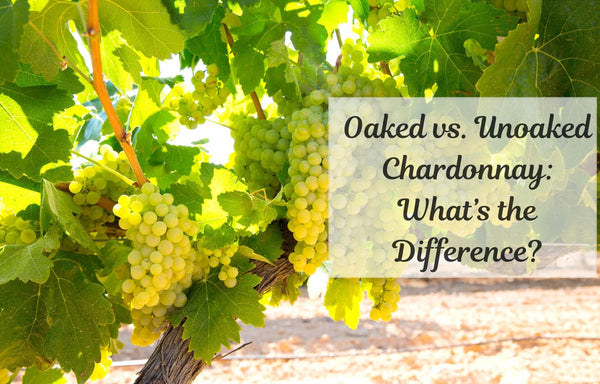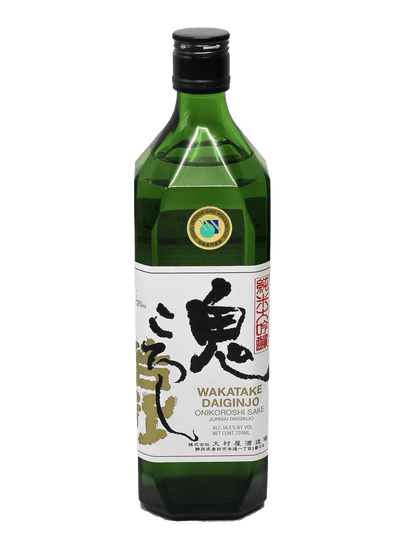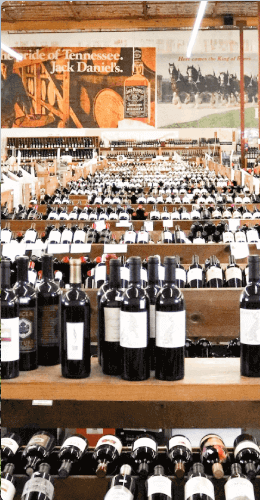Oaked vs. Unoaked Chardonnay Explained: Taste, Pairing, and More

Discover the key differences between oaked and unoaked Chardonnay, from flavor profiles to food pairings. Whether you're after the best Chardonnay wine for a special meal or simply looking for the best Chardonnay under $20, this guide helps you navigate style, region, and chardonnay wine price. Perfect your next oaked Chardonnay food pairing or explore California unoaked Chardonnay options with confidence.
------------
Few grapes spark as much debate among wine lovers as Chardonnay. For some, the best chardonnay wine is versatile, luscious, and comforting. For others, it’s a symbol of excess; that is, over-oaked, overripe, and overwhelming. But this controversy really hinges on one key distinction: oaked vs unoaked Chardonnay. Understanding the difference will help you navigate styles, choose better bottles, and master wine pairings. This article will help you make sense of it all before you buy wine online.
What is Oaked Chardonnay?
Oaked Chardonnay, especially from California, wears its barrel aging proudly. It’s often full-bodied, resplendent with vanilla, toast, and tropical fruit notes like pineapple and mango. These wines undergo malolactic fermentation, which smooths acidity and adds a buttery texture that’s either adored or reviled.
Here in Bottle Barn’s home of California, where sun-drenched vineyards ripen Chardonnay to full sugar and flavor, oak aging amplifies richness. The result is a creamy, heady wine that’s at home with buttered lobster, shrimp and grits, or even a juicy steak. These are the big wines that feature high levels of alcohol and flavor intensity.
Not all oaked Chardonnays are butter bombs, however. Today, many quality producers are pulling back, aging their wines in neutral barrels, or reducing oak time to strike a better balance. Wines from producers like Cakebread, Grgich Hills, and Au Bon Climat deliver complexity without going overboard. If you're shopping online values, the best chardonnay under $20 might even come from producers like La Crema, Hess Select, or Bogle—wines that show restraint and value.
Oaked Chardonnay Food Pairing Tips
Oaked Chardonnay’s creamy, textured palate pairs best with rich foods. Consider, for example, trying the following:
- Lobster with butter
- Salmon in cream sauce
- Roast chicken or turkey
- Butternut squash risotto
- Dishes with tropical fruit sauces (e.g., mango salsa)
These wines also shine with guacamole, fried chicken, and even buttered popcorn. Such flavors echo their ripe, round profiles.
cozy afghans, or weighted lap blankets for gifts that wrap recipients in a blanket of care.

What is Unoaked Chardonnay?
At the other end of the Chardonnay world lies the unoaked types. These wines are usually crisp, clean, and mineral-driven. Here, the fruit speaks clearly, often showcasing green apple, lemon, or white peach, with a tangy acidity and little to no influence from wood.
French Chablis is the classic example, but California (or even Australian) unoaked Chardonnay is becoming increasingly popular. These wines skip the barrel in favor of stainless steel or concrete tanks, highlighting freshness over fat. They tend to be more food-friendly and less polarizing.
Producers like Mer Soleil Silver, Starmont, and Trefethen craft excellent unoaked styles from California. If you’re after the best unoaked Chardonnay on a budget, look to Chile (Concha y Toro) or France’s Maconnais region (Louis Latour, Jadot), where prices hover around $15–$20.
Unoaked Chardonnay Wine Pairing
Unoaked Chardonnay complements dishes with acidity or delicate flavors. For example:
- Shellfish (especially oysters or crab)
- Light fish preparations with lemon or herbs
- Sushi or ceviche
- Fresh goat cheese
- Chicken with lemon sauce
These wines refresh the palate and offer a zesty contrast to briny or citrusy dishes.

Chardonnay Around the World
While California dominates the conversation, Chardonnay is a global grape. In Burgundy, Chardonnay reaches its zenith. White Burgundy, especially from Meursault, Puligny-Montrachet, or Chablis—offers refined, age-worthy expressions with subtle oak, earth, and minerality. These wines can command prices north of $100 but also appear in more affordable forms, especially from the Maconnais and village-level appellations.
Australian Chardonnay leans toward the California style that is tropical, oaky, and full-bodied, but producers like Leeuwin Estate and Shaw + Smith are shifting toward more nuanced expressions. Meanwhile, Chile and New Zealand provide good value, with balanced wines at lower chardonnay wine prices.
Choosing the Best Chardonnay Wine for You
There’s no one-size-fits-all “best chardonnay wine.” It depends on your taste and the occasion. If you prefer rich, buttery wines, then go for oaked California Chardonnay or white Burgundy from Meursault.
Want something lighter and fresher? Choose unoaked styles from Chablis, Maconnais, or modern California producers.
Watching your budget? Seek the best chardonnay under $20 from Chile, Australia, or California’s value labels like BV Vineyard, Columbia Crest, and De Loach.
The good news is that the Chardonnay landscape is broader than ever. Whether you crave the toasted warmth of an oaked beauty or the citrus snap of an unoaked refresher, there’s a bottle that fits your table and your taste.
Don't let Chardonnay’s divisive reputation keep you from exploring. Learn the difference between oaked and unoaked styles, match them with the right foods, and you’ll discover why Chardonnay remains the world’s most planted white wine grape. Whether you’re pairing a California unoaked Chardonnay with sushi or uncorking a buttery bottle for oaked Chardonnay food pairing, the versatility of this grape makes it a classic for a reason.
Explore Bottle Barn’s selection for styles across the spectrum—from crisp and clean to rich and round—at every chardonnay wine price point.
Related Blogs:


















Leave a comment